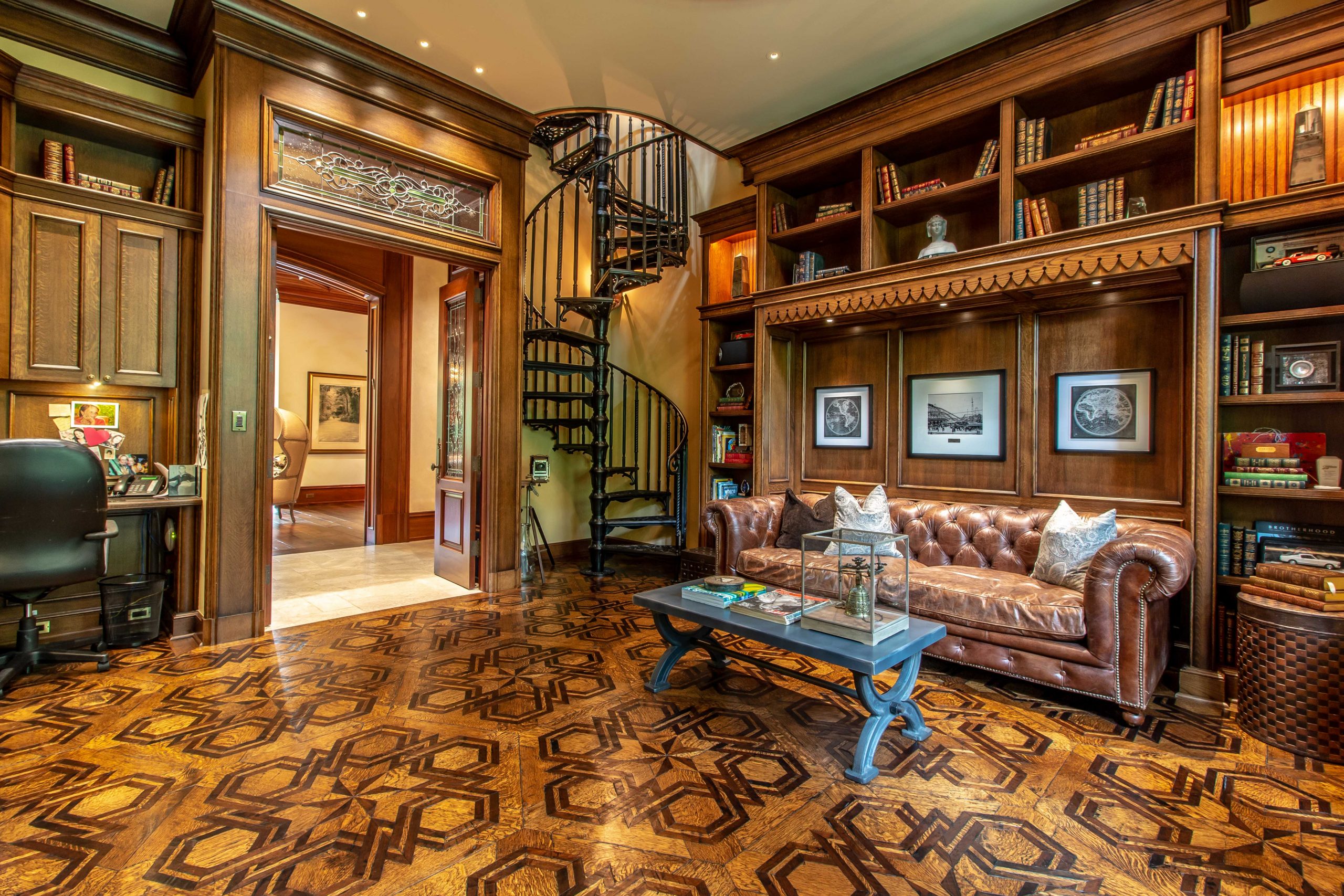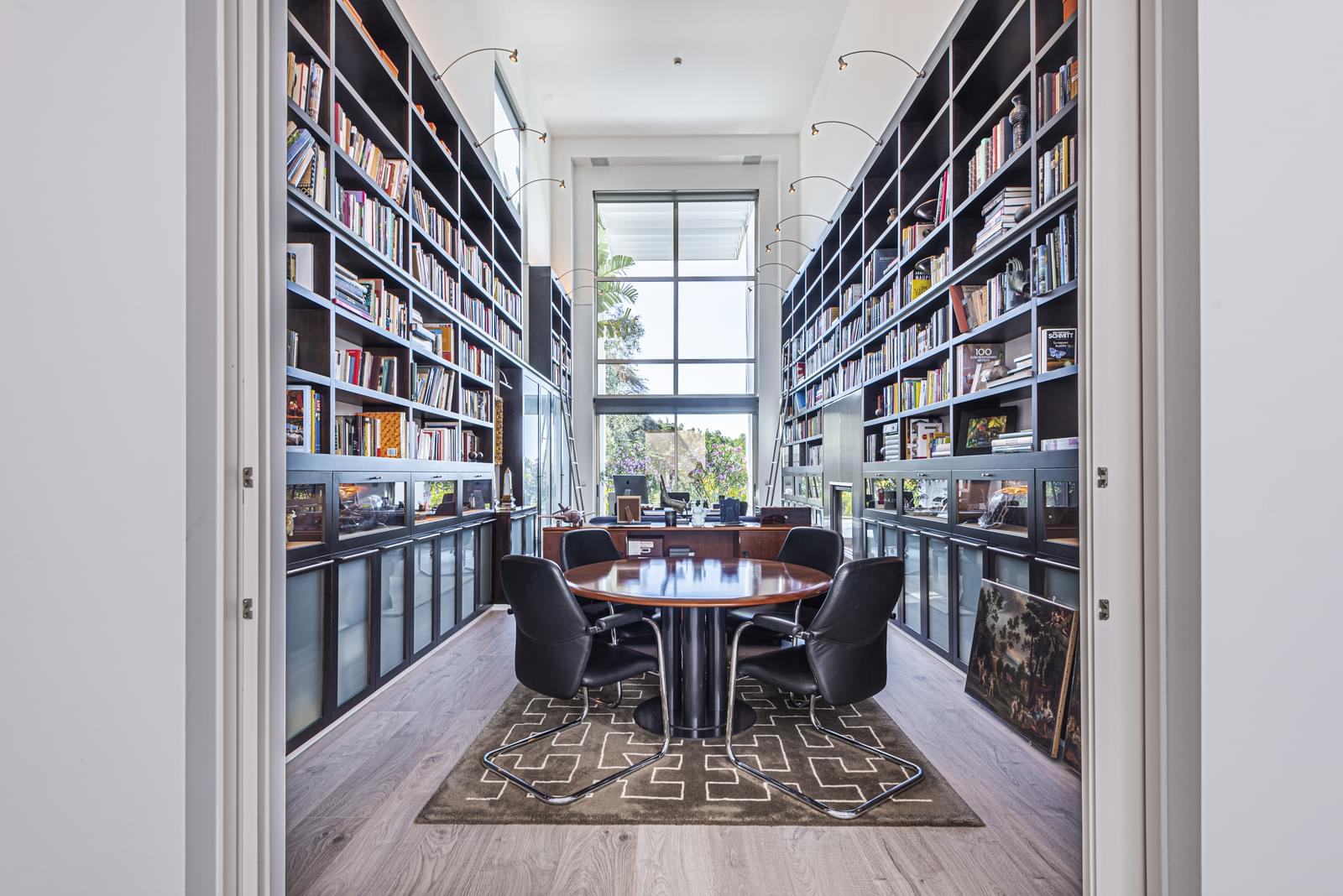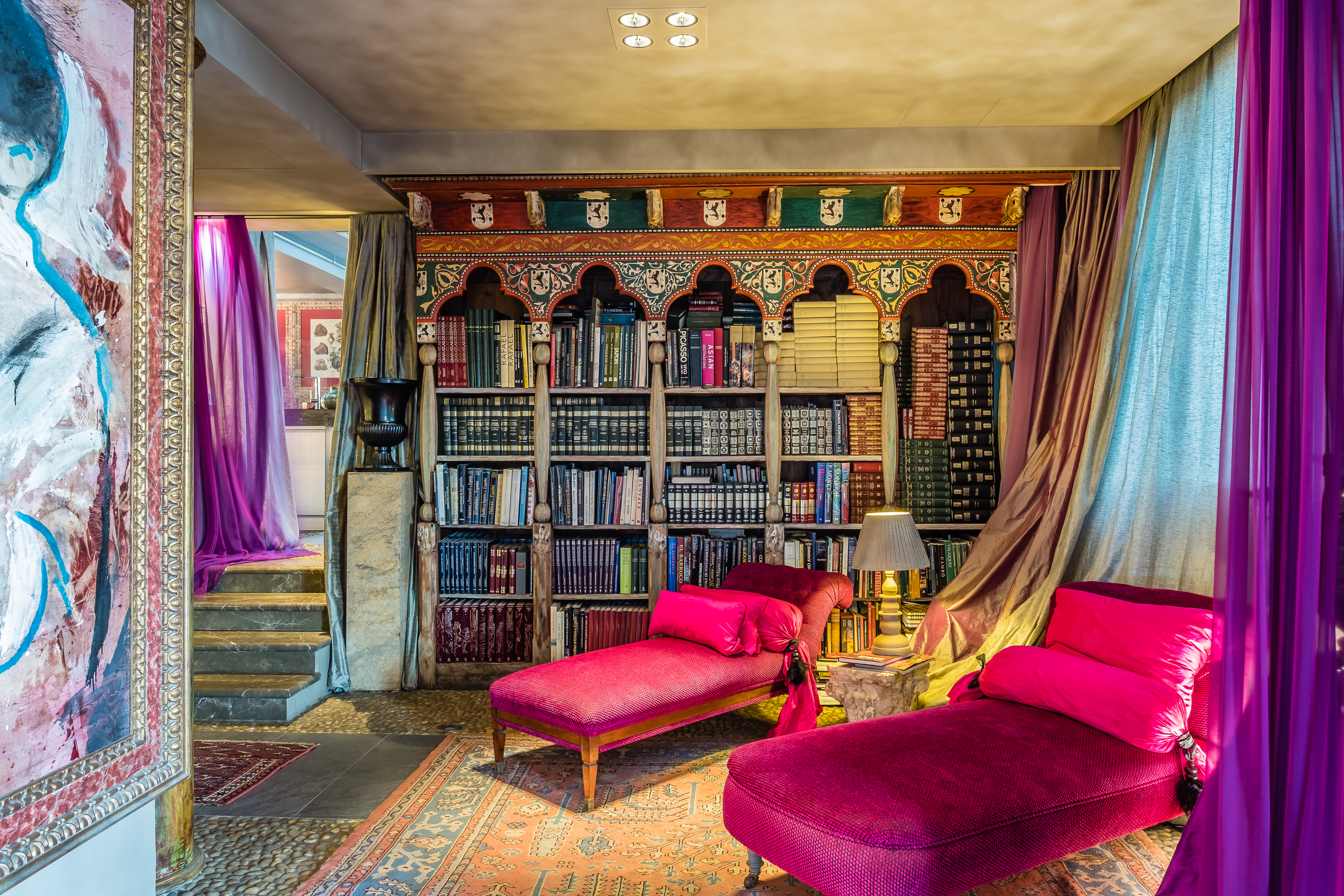Welcome to Your Library: 6 Homes for Book Lovers
Inspired by National Library Week (April 4–10), Luxury Defined spotlights six elegant homes for bibliophiles
Inspired by National Library Week (April 4–10), Luxury Defined spotlights six elegant homes for bibliophiles
Welcome to your library! So says the American Library Association, the organization behind National Library Week (April 4–10), which highlights the essential role of libraries, librarians, and library workers in their communities, especially during these challenging, socially distanced times. This year’s honorary chair, actress, director, producer, and author Natalie Portman, elaborated: “Libraries are open, inclusive places that foster a sense of belonging and community,” she said. “They show us anything is possible by encouraging a love of learning, discovery and exploration.” Herewith, this Luxury Defined collection offers a trove of homes for the true lover of books and reading. Consider a trophy estate in New York’s Westchester County with a magnificent two-story library clad in saddle leather—and an equestrian pedigree. A Moorish-inspired villa in Ibiza, a riverfront manor in Michigan, a golf retreat in Portugal, and a gated estate in Los Angeles all have elegant wood-panelled libraries. Then there’s a townhouse in New York City’s Sutton Place, this one the home of celebrated architect I.M. Pei, which offers a modern take on a classic reading room. Feel free to browse.
Stevenson Ranch Estate in Valencia, California
This grand, custom-built stone house sits on an acre of grounds in the gated community of Westridge Estates in the Stevenson Ranch area of Los Angeles County. Designed by Russel Tyner of LA-based architects Houston / Tyner, the home extends to more than 10,500 square feet of living space with five bedrooms and seven full bathrooms, including guest and staff quarters and a lavish primary suite. The entrance hall opens to grandly scaled reception areas with hand-cut stone finishes, beamed ceilings, rich wood floors, and five fireplaces. The home’s two-story library/study is a grand affair, featuring wood-panelled walls, solid wood floors, a monumental fieldstone fireplace, and a wooden staircase rising to a mezzanine-level reading room. Farther along is an inviting family room with detailed, rustic elements; an authentic bar with billiards table and jukebox; and a huge gourmet kitchen with top-of-the-line appliances and a breakfast area. Private balconies and terraces offer views of the city skyline and Oak Reserve. Completing the picture are lovely landscaped grounds with a fountain and waterfall, grotto-style pool, and an elegant alfresco dining area with grilling station and fireplace.
Stonewall Farm in Westchester County, New York
At 740 acres, Stonewall Farm is the largest privately owned property in Westchester County. Dedicated to raising championship Thoroughbred racehorses, Stonewall Farm has been scrupulously preserved over the last 40 years by owners, Barry K. Schwartz, co-founder of the Calvin Klein fashion empire, and his wife, Sheryl. The property offers a magnificent owner’s compound, superbly maintained grounds, and world-class equestrian facilities, all just an hour from New York City. The 24,000-square-foot colonial-style manor house was designed by New York-based architect Rebecca Rasmussen with interiors by British designer Kelly Hoppen. The luxurious, two-story library would delight any reader with its abundant natural light and built-in shelves below and above the second-tier balustrade. The equestrian lifestyle gets its homage in the saddle-leather tiles that accent the floors and fireplace, and the floors of the adjacent office office and elevator. The formal living and dining rooms are served by a gourmet kitchen. There is a sunroom, salon, a 2,200-bottle wine cellar and tasting room, and a tranquil owner’s suite. The grounds offer French formal gardens, a pavilion-style pool house, orchards, woodlands, ponds, and sweeping vistas of the countryside.
Rouge River Estate in Bloomfield Township, Michigan

This craftsman-style residence offers ultimate privacy in a fully automated “smart home” on nearly 11.5 acres of landscaped gardens and lush woodland in Bloomfield, Michigan. The home was built using only the finest materials and artisanal finishes, including mahogany woodwork, antique fixtures, and stained and leaded glass. The entrance hall, with its stained glass ceiling dome, introduces the main level with a grand statement. A banquet-size dining room, vast kitchen, theater, and lavish owner’s suite (with sunroom, terrace, and covered porch) are other highlights, as is the library, which spans two levels: the main-floor reading room and the second-floor study, connected by a handcrafted spiral staircase. There are five bedrooms and three bathrooms on the second level. The lower-level entertainment floor features a professional bar, wine cellar, recreation room, kitchen, gym, and art studio. Auto enthusiasts will appreciate the heated, eight-vehicle garage with car lift, accessed via a gated, private road. The Rouge River winds through the estate’s picturesque grounds, further enhanced by formal gardens, a pond, and a barn.
Quinta Patino Golf Villa in Cascais, Portugal

This sleek contemporary villa is surrounded by greenery in Quinta Patino, an exclusive residential development in Portugal. The 6,512 square feet residence has a prime spot, overlooking the fairways of the renowned Estoril Golf Club. The light-filled living areas are made for fine art and sculpture. Walls of glass, whitewashed walls, and marble floors and lend to the ambience of serenity. The library is flanked by two rows of bookshelves rising to a double-height ceiling and a glass wall facing the fairways. The main floor appointments continue with a formal dining room, family room, media room, chef’s kitchen, and three en suite bedrooms. The upper floor is dedicated to the primary suite and mezzanine study. The lower level houses a large game room with bar, cinema theater, four-car garage, staff apartment with separate entrance, and last but not least, a spectacular wellness center composed of a gym, sauna, Turkish bath, and indoor pool. There’s also an outdoor pool in the mature gardens, as well as several terraces for alfresco dining and entertaining and a barbecue area. Quinta Patino residents have access to the resort’s five-star amenities, including the fitness center, gardens, clubhouse, and tennis courts.
The I.M. Pei Residence in Sutton Place, New York City
Perched above the East River in the prestigious, tree-lined Manhattan enclave of Sutton Place is the cherished townhouse of celebrated architect I.M. Pei. A vast, four-story residence offering a cool modernist aesthetic, this property showcases views of the East River, the Queensboro Bridge, and Roosevelt Island beyond. At the heart of the house is a grand marble foyer and breathtaking spiral staircase of Pei’s design, capped with a skylight reminiscent of the architect’s famed glass pyramid at the Louvre Museum in Paris. The staircase rises to the parlor-floor living room with 10-foot-tall ceilings, Tasmanian oak floors, and a working fireplace framed in elegant soapstone designed by Mr. Pei. This floor also features a library with built-in floor-to-ceiling bookshelves and storage, another fireplace of I.M. Pei’s design. A serene main suite on the third level is a space for relaxation, while three additional bedrooms each have en suite bathrooms, ample closets, and a tranquil atmosphere. The townhouse at 11 Sutton Place also includes a garden-level kitchen and formal dining room, a spacious wine cellar, a basement, and a private elevator serving all floors.
Es Bosc in Ibiza, Spain

Es Bosc is a sumptuous Mediterranean villa designed as a celebration of art, nature, and the senses. Perched on a hillside with views of the Mediterranean Sea, the home is evocative of a Moorish palace, accoutered with carefully sourced antiques, rich fabrics, and decorative handcrafted finishes of wood and stone. The great room is lit by a beautiful Mudéjar-style ceiling dome crafted from dark wood and purple glass. The library is equally ornate with its intricately-carved, hand-painted bookshelves and floor-to-ceiling wood panelling. There are six bedrooms and six bathrooms. The main suite is a private oasis with a Jacuzzi, sauna, and panoramic views of the bay. Furthering the opulence are the serene outdoor spaces, which include a lavender field, vegetable gardens, and an infinity pool that seems to merge with the sea below.